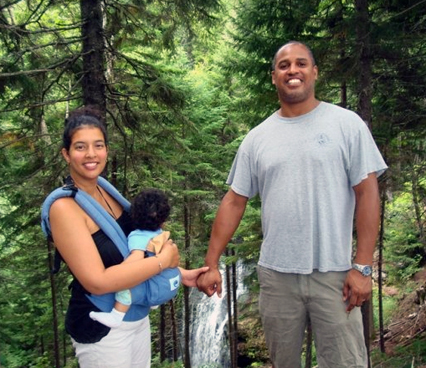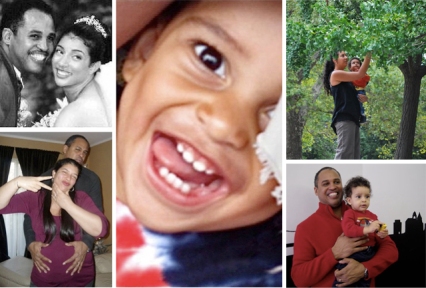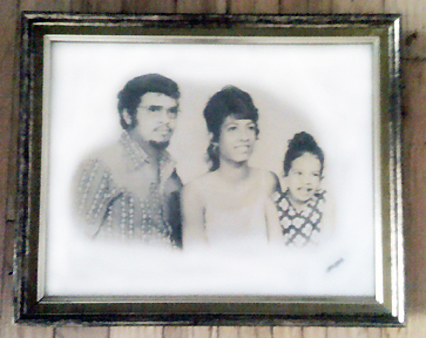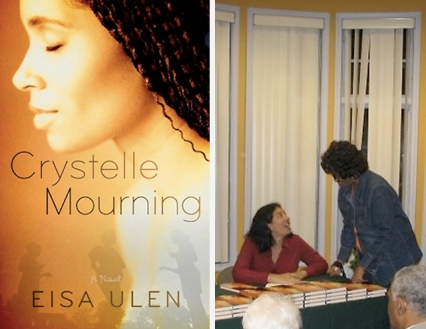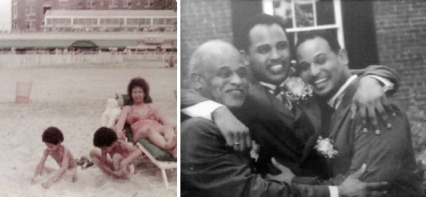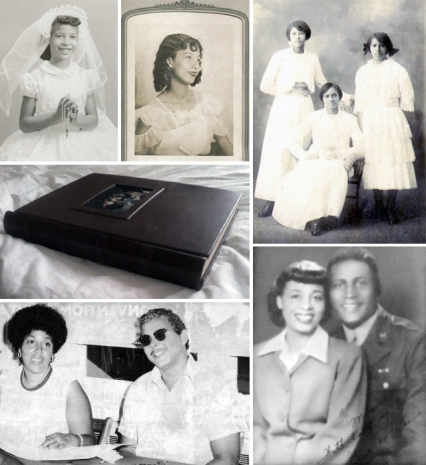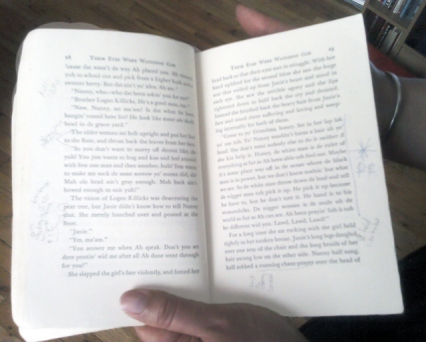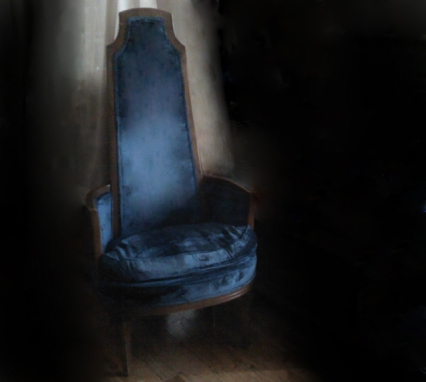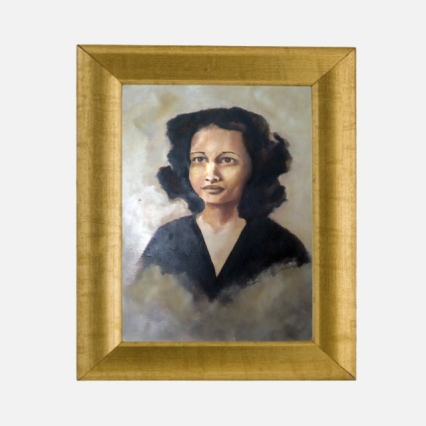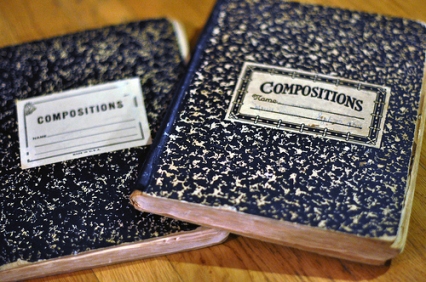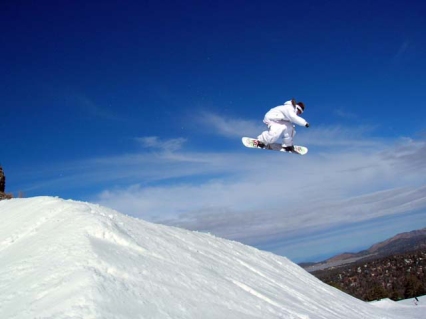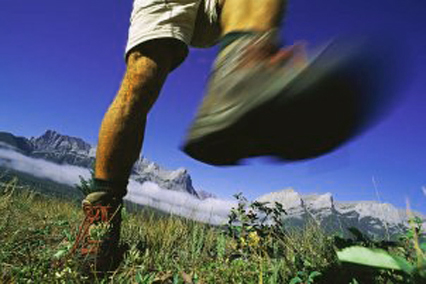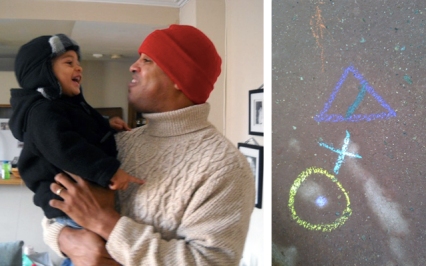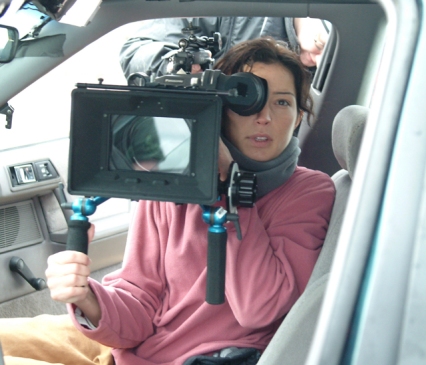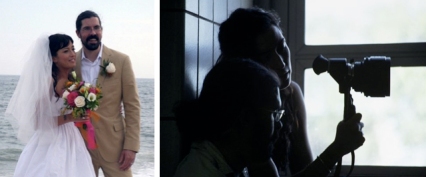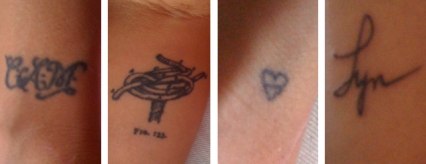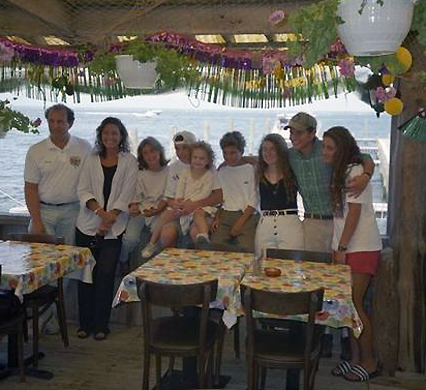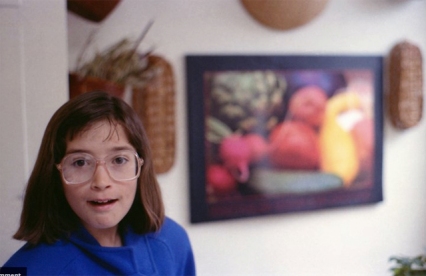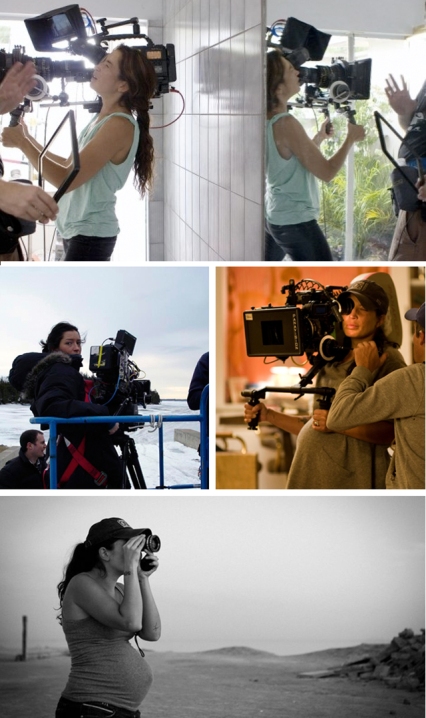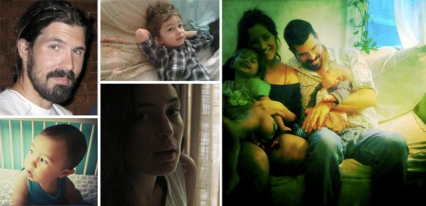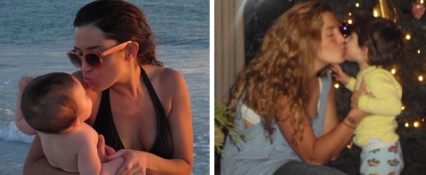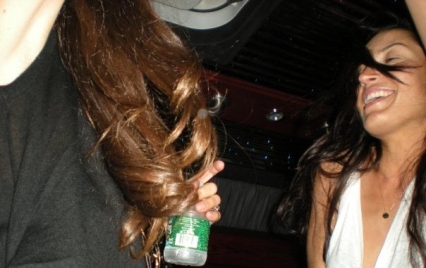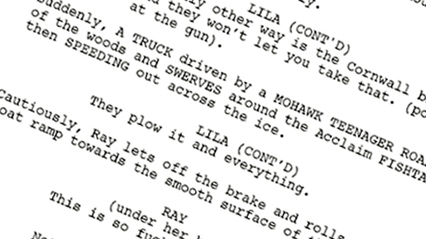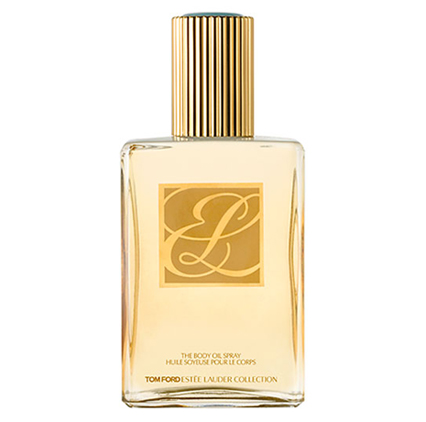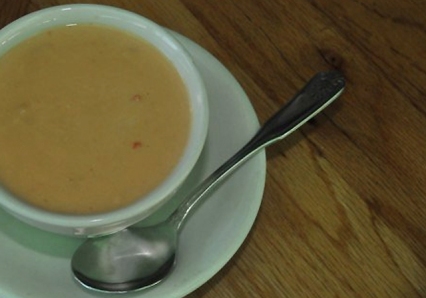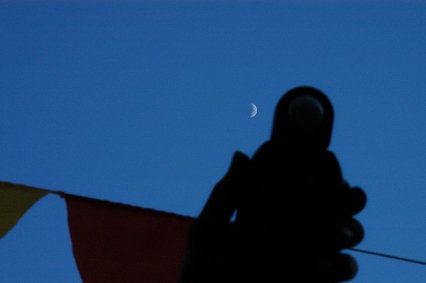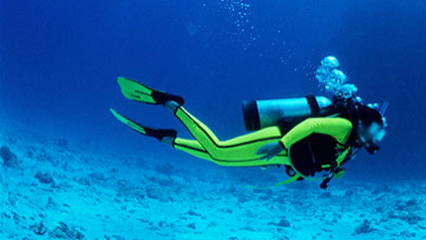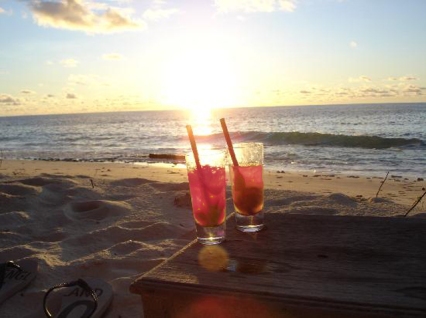On the Fundy Trail. On each other: “He is my rock…She is wonderful, loving, giving.”
Capricorn hip-hop heads Eisa Nefertari Ulen and Ralph Richardson, Jr. lived parallel lives near to, yet unaware of each other. Born in the city of Brotherly Love, each eventually moved with their families to idyllic Columbia, Maryland in the 1970s. As young adults, they both lived in the Nation’s Capital. For years, their worlds hovered close, threatening to collide–their cousins were good friends; they attended some of the same memorable events; they both considered law careers until the Muse called and each followed her to Brooklyn. In 1999 at the junction of Fulton and Flatbush, defying the laws of physics, their parallel lines converged.
“He saw me walking ahead of him and he liked my posture,” Eisa says. They did a bit of a dance — he walking alongside her then dropping back in the cut when she failed to notice. Undeterred, he finally strode forward offering a bright smile and a hello. “We started talking and he told me he was a filmmaker,” she says. “I was like yeah and everybody else in this neighborhood.”
“No, no, really I am,” he said and dashed into his nearby apartment emerging with a VHS tape of his first film, a black and white short called Kharja which they promptly viewed in the local video store.
“Absolutely, stunningly beautiful,” Eisa says. “Very well-done. So we talked about that and I told him I was a writer and he walked me home.” Since she’d just met him on the street, she was initially hesitant to give up the digits when he asked for her phone number. “He said, ‘You know you’re going to give it to me’ and actually I did know. Though I couldn’t articulate it at the time, when I looked at him, he felt really familiar. I gave it to him and about 10 minutes later he called and read me a poem he’d composed about our meeting.”
“Off the top…I only make fresh-baked bread,” Ralph laughs. From that day on, every day they were in the same town, they saw each other. There was no singular moment when it crystallized for either of them, “other than just meeting,” he says, the infinity line touched in Fort Greene. “Things evolved organically,” Ralph says and they married July 5, 2004.
“We are committed to each other as loving partners but both having divorced parents we’re even more committed to the institution of marriage,” Eisa says. And now since the 2009 birth of their son, Ralph Everett Hooper Richardson III, their entangled roots grow deeper.
“Ralph is the one I knew was out there. I had opened up a space in my life for my husband to walk in and that’s when he came…and gave me a son.”
When I visited the Richardsons in their Fort Greene home last week, Ralph talked time theory while Eisa readied herself in the bedroom. “Time drags for the young. The older you are it seems that time quickens. I think it’s because you’re denied things when you’re young: I can’t wait to be this, I can’t wait to do that. Anticipation elongates time and I think adults need to incorporate that anticipation to extend time.” Two-and-a-half-year-old Ralphie popped out to give me status updates on Mommy. Astrology buff Ralph explained that their son is an Aquarius, the water bearer, “he pours the water into the river, conducting the flow.” When Eisa emerged she thanked her baby boy for keeping the communication fluid.
As I sat down with the writer and filmmaker to chat life, books and movies, the ridiculously cute Ralphie (a.k.a. Hoop) shared his artwork: mixed media on paper and a Cheerios butterfly which I awkwardly broke “Ooh Miss Sharon destroyed the butterfly,” Eisa laughed and quickly reassembled the pipe cleaner-clothespin-breakfast cereal creation.
Eisa holds dear the sense of place, lineage, history, being. She is fiercely proud of her stunningly elegant “Grandmom,” Carmelita, “the Philly fashionista,” and first black woman to become a nurse-anesthetist at the University of Pennsylvania. There are traces of her in Eisa’s graceful comportment. She is grateful for her bright, beautiful mother’s staunch support. She knows she stands on the strong shoulders of remarkable women (and men) and revels in “who I am as a woman right now. The identity of being a mom, a wife, a writer… that’s really special to me.”
Ralph is a take-it-as-it-comes guy moving through life’s triumphs and challenges in good humor with an open mind, hearty laugh and belief in the power of dreams and embracing the fortuitous moment.
Not surprisingly, womanist Eisa’s favorite films are black woman-centered and directed, Daughters of the Dust and Eve’s Bayou. Ralph’s top three are The Godfather, 1 and 2, (“bar none, together they are my number one,”) Blade Runner and Scarface.
“I used to think of The Godfather as a gangster movie and what my husband taught me is that it’s a narrative about immigration,” Eisa chimes in. “And so it got me thinking Scarface and Godfather are really rich immigrant tales. Scarface had a lot of exploitative elements but it was riveting; that opening montage with the Mariel boatlift anchors the film in a powerful way. Ralph helped me differentiate between these immigrant tales and narratives of containment like Boyz in the Hood or Menace II Society. My favorite in that category would be City of God.”
“Yes, awesome film, awesome,” Ralph agrees. “Probably my fifth favorite, with Alfred Hitchock’s Notorious at number four. I’m all into the conspiratorial, claustrophobic, paranoia-type thing. I’m a big fan of noir and it has those elements. My favorite books are Ralph Ellison’s Invisible Man and Philip K. Dick’s Do Androids Dream of Electric Sheep, the basis for Blade Runner. Ellison has those elements of claustrophobia and being oppressed …gravity, tremendous amounts of gravity.” Of his two favorite authors he says, “I’m gonna make a movie combining those two sensibilities and smashing them together.”
Eisa’s favorite books are all seminal works written by black authors: Zora Neale Hurston’s Their Eyes Were Watching God, Jean Toomer’s Cane and South African writer, Bessie Head’s Maru. Her own first story–written at about age four–on tipis and tulips, remains in her mother’s library.
The gorgeous Ulen family in 1970s ubiquity: the Olan Mills portrait.
Eisa’s activist parents, Tony and Cheryl Ulen met as students of historically black Lincoln and Cheyney Universities. They raised their infant daughter in his hometown of Harrisburg, Pennsylvania. By the time of the Three Mile Island nuclear meltdown, they’d divorced and Eisa’s grandfather admonished, “get my granddaughter the hell out of there.” Her mom, ready for a fresh start, took her ten-year-old to the relatively new planned community of Columbia, Maryland.
A proud alumna of Baltimore’s all-girl Western High School, Eisa “always did well in English class, contributed to the literary magazine and even wrote for the city youth newspaper.” Though black literature was prominent in her own home and her granddad was a journalist, she planned to become a lawyer. When a friend explained that she wanted to attend Oberlin College because they had a great writing program, she “opened a door of possibility for me,” Eisa says. “It was like ding ding ding ding…you can make a career of being a writer.”
A presentation at Western on Sarah Lawrence College (which also has a stellar writing program) sold her. “I was in love. The recruiter talked about the philosophy of the school, the culture and the school community.” The location,”right outside New York was ideal because I knew I didn’t want to be in the city, but I wanted to be close. I got the best of both possible worlds.” She wrote throughout college, contributing to school publications. She spent her junior year at Howard, “when DC was the murder capital. We lived at 111 Bates and I was sitting on the stoop when these two girls walked by who were about my age. I overheard them talking: ‘I’m gonna just go on and have this baby before he gets shot up or locked up’ and that stayed with me. It’s not like I went inside and started writing but I held onto the line,” she recalls.
During her senior year, she wrote her first nationally published story, “a remix of ‘Little Red Riding Hood’ for Urban Profile magazine.” She went home for a couple of years and taught school until she returned to New York to pursue a graduate degree in philosophy and education at Columbia.
Upon examining the lives of Langston Hughes and Zora Neale Hurston she realized that she didn’t have to be pigeonholed into one genre of writing. “I knew Langston as a poet and Zora as a novelist,” she says. “But there was so much more, especially Zora. She did the Bohemian Fire Dance; she studied anthropology, so she created scholarly work; she was writing essays; she did some freelance journalism; she taught; she worked on the play, Mule Bone; and her fiction, so many short stories and novels. It became very clear to me that I didn’t have to limit myself. Instead of saying I’m a fiction writer or I’m a poet or I’m a journalist I could just say I am a writer. I could be free to do all that.” And so she has, contributing to everyone from The Washington Post to Ms. to The Source to TheRoot.com while keeping her eye on the fiction prize. As a former fellow of the Frederick Douglass Creative Arts Center’s Young African American Fiction Writers, she will be “eternally grateful to Fred Hudson, may he rest in peace for establishing a place for black writers in New York to really nurture creativity in black literary art.”
Her beautiful debut novel, Crystelle Mourning is not autobiographical yet it is imbued with the sensitivity of collective generational experience. “Even though I grew up pretty much middle class and had normal teenage stuff in my life, Baltimore had the highest assault rate then. It was the eighties and I’d go to parties and somebody would get shot and killed; I’d go to the Inner Harbor and somebody would start shooting in the air and everybody would be running. I’ve had those physical experiences with what was going on statistically all around me. Our generation is not so different from generations before in that we had to learn to process terror.”
The response of the Afrocentric movement was, she explains “very male-centered, there was a gender-specific way of looking at what was going on, which makes a lot of sense because it was boys and men who were killing each other. Girls weren’t out shooting each other, so I get that, but what became an interesting question for me as a feminist and black woman, a womanist was Well what about the girls and women left behind? How does their pain get expressed?
When she started writing Crystelle Mourning, Eisa thought it was a short story collection. She’d won the fellowship and joined a writers’ group with Brooklyn writer Grace Edwards. “Grace was the one who told me that what I was writing was a novel,” she says. “What became clear is that I was writing about the experiences of my generation and I thank that woman whose name I’ll never know from Bates Street that night because her voice guided me to this work. It’s really about these women: Crystelle, the title character, her mother and the mother of the boy she grew up with who lived across the street. It’s about what happens to these women after he is shot and killed their senior year in high school.”
The story resonates deeply: “I’ve had women cry and come up and hug me after readings.”
In anticipation of Ralphie’s birth, Eisa quit her collegiate gig teaching English at Hunter. She’s now focused on raising him and throwing herself headlong into writing. Keep abreast of her insightful, incisive work at EisaUlen.com.
Boys to men: the Brothers Richardson, Ralph and Anthony with mom Diane and dad Ralph, Sr.
Unbeknownst to her at the time, Diane Richardson sowed the seeds for life-long passion in her first-born. “My mom used to take my brother and me to the movies every weekend.” His first memory of seeing a film is from age three: George Romero’s Night of the Living Dead. “That was the time of double-features for a buck. So I’ve seen all the blaxploitation movies in the theater, when I was like three, four, five-years-old– Shaft, Blacula, Rosey Grier in The Thing with Two Heads, Mandingo,” he says. “I saw Jaws at seven.”
“I saw Bad News Bears,” Eisa interjects. She recalls loving the wholesome ET, Ralph has a different take: “Spielberg’s a great filmmaker. It’s cute, but I was like there’s no black dudes in the cul-de-sac and yet everybody loves this strange creature, I don’t see Julio from down in the schoolyard in there. About his adult-themed viewing he says, “it didn’t blanket my innocence, but it made me astute. I had an acute sensibility about what I did like.”
Although he and Eisa aren’t likely to allow their child to watch movies with mature themes, Ralph “wouldn’t change a thing” about his childhood. He was in no way traumatized, in fact he is ever grateful to his mother for the weekly cinema ritual. “It had to have inspired me,” the Widener University grad says. “I didn’t realize until I was 25 and had decided to go to Georgetown Law School that I wanted to be a filmmaker. I asked myself if I knew I couldn’t fail, what would I do? And this voiceless voice inside said film. Then all this stuff started pouring out. It was a very latent talent I hadn’t realized I had. I never hesitated, I packed up and rolled to New York.” Learning by doing, the self-taught filmmaker began his quest.
His roommates were all Philly transplants: stylist Debra Ginyard, model Belinda Sawyer and actress Yvette Ganier. “I was like Jack Tripper up in that piece,” he laughs. Debra suggested he get a headshot for acting opportunities while trying to establish himself. On the day Tupac Shakur died the hip-hop fan co-directed his first film with a cast of friends, roommates and himself in the male lead from a script he’d written in 20 minutes (“it flew right out.”) His partner, a film school grad backed out of the project in post production, leaving Ralph to his own devices. Serendipity would have it that he found an editing bay made available for free during certain hours. By immersion, the novice learned to cut film the old-fashioned way, on a flatbed Steenbeck. The film won a New York Short Film award and ran for six months on Starz. “So I knew I could do this,” he asserts.
Shortly after moving to New York he had a vivid dream. “It was so visceral. I was in China. I was really there and had the greatest time.” Two weeks later he heard from a casting director, We have your headshot. We want you to audition for this part shooting in China. “I don’t even know how they got the headshot,” he says. He went in of course, to audition and when he blurted out about his dream he got the part. “The Chinese are very into fortuitous luck, so if you dream something like that, it means something.” Off he went to China, shooting for four months. “It was one of the best times of my life, it was incredible, I loved every moment of it,” he remembers. “By six weeks I didn’t need an interpreter because I love people and being able to communicate with them.”
“Then I worked with RZA on this film I wrote, When Tyson met Tyra. It was my first feature, an urban Bonnie & Clyde.” He has since directed and/or edited numerous filmed projects and additionally he covers film, television, and popular culture as a freelance writer for TheGrio.com, TheDefendersOnline.com and Time, Inc.
Posted today on theRoot.com is Ralph’s article on Video on Demand (VOD), the game-changing approach to film distribution he’s utilizing for his latest film now available via Amazon as well as VOD. Sex, Drugs and Comedy, “is a wonderful trip on the road with some of the most brilliant comedians in the country.”
He runs down the first day of production: “I’m shooting on the bridges getting b-roll stuff for the road and this cop at the toll booth wants to confiscate the camera… on the path of the hero there’s always an immediate obstacle to overcome. Then we run out of gas and literally push the car to the gas station. Then the car breaks down completely. We borrow a car, get lost and finally make it to the place with 15 minutes to get set up. We put the key card in the door to our hotel room, it opens, but it’s bolted. The promoter is having sex with a groupie. You can’t write this stuff…and that was the very first day.”
It’s a rough journey to the A-list. “The crux, the core of being a comedian is the hustle,” he says. “They’re like truck drivers, it’s a hard road.”
“They are the funniest comedians you never heard of,” says Eisa of the comics-on-the-cusp in the film.”Sex Drugs and Comedy is funny, but it also has a real heart and soul that’s poignant and makes it special,” she says proudly of her husband’s work. “Comedy is a brutal art.”
Before I left them to settle Ralphie into naptime, they shared a few favorite things: for Eisa, the stuff of memory, reflection and nostalgia and Ralph’s all kinetic energy: moving pictures, moving sound, moving the body.
Eisa’s Fave Five:
1.Old Family Photos. Represent, represent. Ralphie will know from whence he came surrounded by the faces of family adorning the walls. Years ago Eisa discovered a cache of photographs — from snapshots to formal portraits in a bag at her grandmother’s house which she painstakingly mounted for her in a leather-bound archival album. Now that Carmelita has passed on, she treasures the collection.
A few of the many priceless photos: Ralph’s mom Diane in her confirmation portrait; Eisa’s grandmother Carmelita in 8th grade; Eisa’s Bermudan kin evoke Daughters of the Dust; Ralph’s paternal grandparents, Doris and Gene Richardson; Ralph’s maternal grandparents, Cat and Sonny Jones and the treasured album.
2. Their Eyes Were Watching God. She cherishes her dog-eared copy of fellow Capricorn Zora Neale Hurston’s classic.
Notes scribbled in the margins are clues to the person she was when she first read the seminal text.
3. The Blue Chair. A touchstone from her mother’s childhood home, it is one of many pieces of heirloom furniture which now grace her Brooklyn apartment.
It’s a Ralphie fave as well, a place to sit with his mom and drum on the djembe.
4. My Paternal Grandmother’s Portrait. Millicent Hooper Ulen was a cellist and pianist and like her father before her she was for many years the proprietor of Hooper Memorial Funeral Home. Her husband, Eisa’s “Pop Pop,” was a writer, the Capital Hill correspondent for the Pittsburgh Courier with an office at the Capital dome in Harrisburg. “I used to like to visit there with my dad, it was very exciting to me.”
Millicent’s son, Lance now runs the family business and created this painting.
5. Composition Books. The classic ruled notebooks with their black and white mottled covers have housed her words from childhood on.
When writing non-fiction, Eisa types directly into the computer, but for her prose, it’s pen to paper.
Ralph’s Fave Five:
1. Great Underground Movies. Two that he likes are Shanghai Triad. “Awesome, awesome movie, like The Godfather but set in 1930’s Shanghai. Beautiful!” And Layer Cake, the British film with a pre-Casino Royale Daniel Craig. “It wasn’t as popular, but just as good as Snatch.”
2. Snowboarding. “I love it because it makes me feel like the Silver Surfer.”
Via Lindsay Fincher.
3. Hiking. The self-described “transcendental mountain man” enjoys a good hike.
“The mountains are calling and I must go.” – John Muir
4. Music. Specifically, “this mixtape I’m still bumpin’ from last year called Radical by OFWGKTA , Odd Future Wolf Gang Kill Them All…The essence of the music stems from an anarchists’ upheaval, Odd Future embodies that.”
“They’re like The Clash-meets-Wu Tang-meets–Onyx. Incredible. They’ve got gnomes as part of their staging. Gnomes! and a lot of smoke and zombies…totally cool.”
5. Adventures with Ralphie. We just walk around and observe things. We don’t go to the playground, we don’t have any stress. So he can not be on the same path all the time, we mix it up, find new things and explore ’cause kids love to explore. I’ll carry a ball, a basketball or a soccer ball and we’ll run the whole time, kicking it along the street. But then we’ll stop at a sculpture garden…Look at flowers, identify them and I’ll put caterpillars in his hands… He’ll watch people play tennis at the park.
